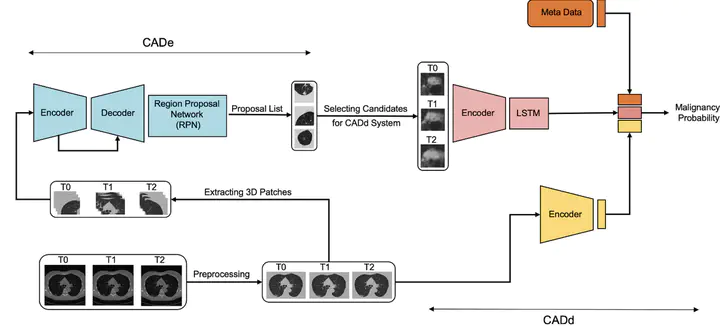Enhancing cancer prediction in challenging screen-detected incident lung nodules using time-series deep learning

Abstract
Lung cancer screening (LCS) using annual computed tomography (CT) scanning significantly reduces mortality by detecting cancerous lung nodules at an earlier stage. Deep learning algorithms can improve nodule malignancy risk stratification. However, they have typically been used to analyse single time point CT data when detecting malignant nodules on either baseline or incident CT LCS rounds. Deep learning algorithms have the greatest value in two aspects. These approaches have great potential in assessing nodule change across time-series CT scans where subtle changes may be challenging to identify using the human eye alone. Moreover, they could be targeted to detect nodules developing on incident screening rounds, where cancers are generally smaller and more challenging to detect confidently. Here, we show the performance of our Deep learning-based Computer-Aided Diagnosis model integrating Nodule and Lung imaging data with clinical Metadata Longitudinally (DeepCAD-NLM-L) for malignancy prediction. DeepCAD-NLM-L showed improved performance (AUC = 88%) against models utilizing single time-point data alone. DeepCAD-NLM-L also demonstrated comparable and complementary performance to radiologists when interpreting the most challenging nodules typically found in LCS programs. It also demonstrated similar performance to radiologists when assessed on out-of-distribution imaging dataset. The results emphasize the advantages of using time-series and multimodal analyses when interpreting malignancy risk in LCS.